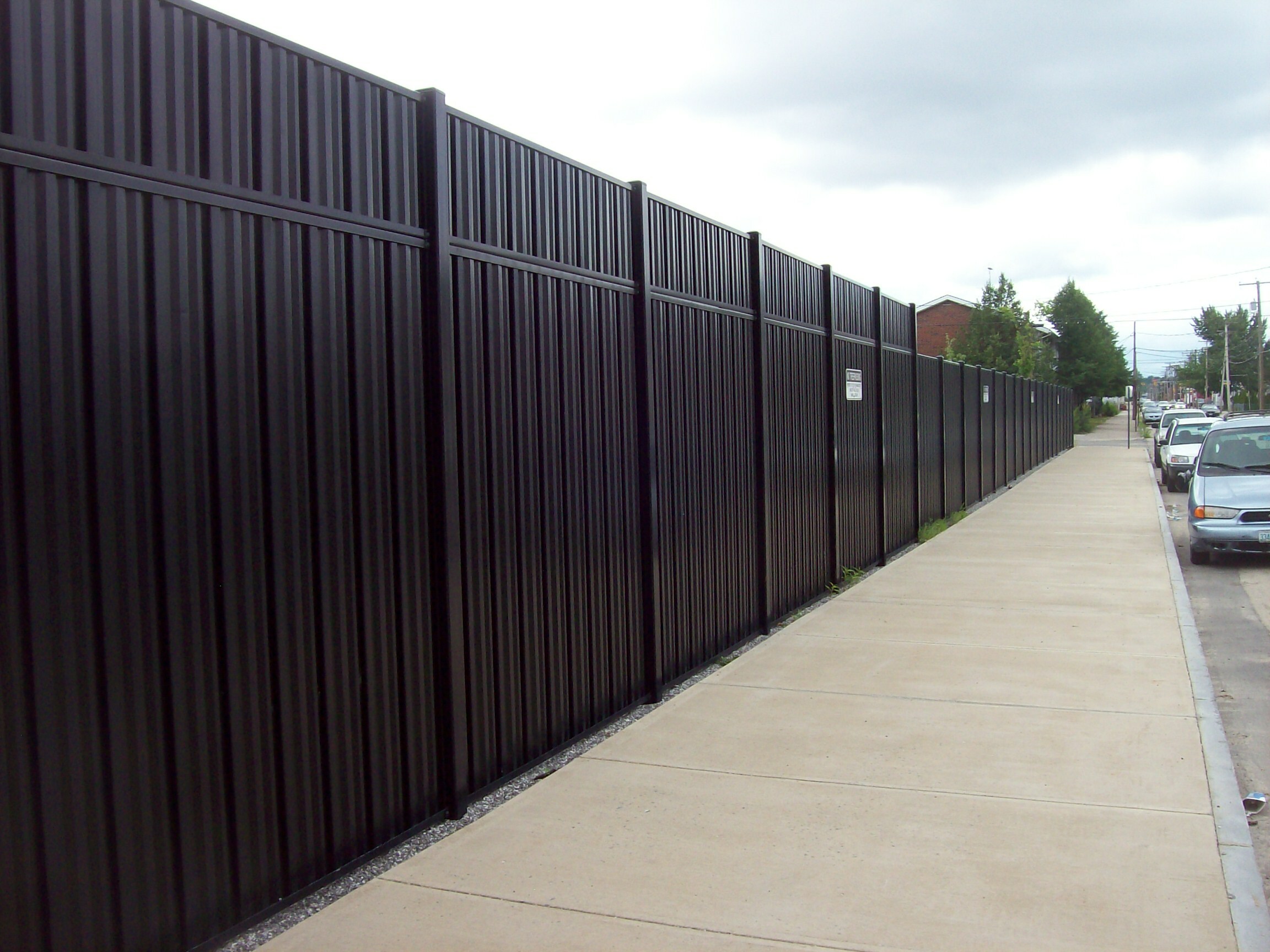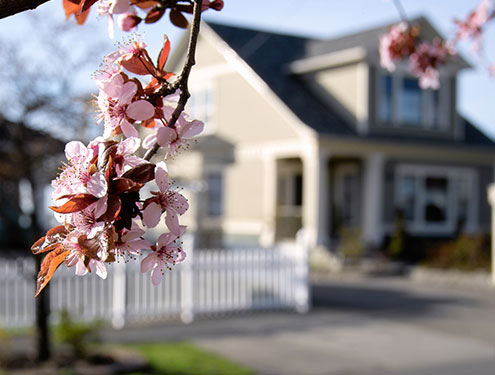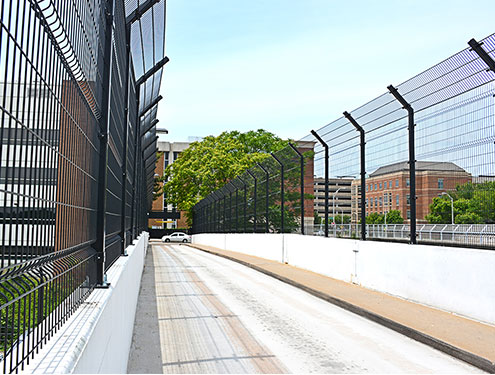An ATFP fence is a frontline defense crafted for locations where safety must always come first. Designs rooted in federal anti-terrorism and force protection standards allow an ATFP fence to absorb vehicle impact, blunt the effect of blasts, and shield critical spaces from harm. The Hurricane Fence team channels a quarter-century of expertise into every ATFP fence install, tailoring solutions for high-risk, high-responsibility environments.
Contents
- 1 The Evolution and Engineering of ATFP Fence Systems
- 2 Building a Strong Perimeter with ATFP Fence
- 3 Passive and Non-Passive Barrier Strategies
- 4 Planning New ATFP Fence Projects and Tackling Retrofits
- 5 Entry Systems and Active ATFP Fence Control
- 6 K Ratings and ATFP Fence Strength
- 7 Layered Site Obstacles and ATFP Fence Design
- 8 Retrofitting ATFP Fence Systems on Legacy Sites
- 9 Why ATFP Fence is Engineered to Stop Vehicles
- 10 Act Now for Advanced ATFP Fence Security
The Evolution and Engineering of ATFP Fence Systems
Every ATFP fence design starts with careful planning based on the real-world lessons of demanding sites. Anti-Terrorism/Force Protection guidance has helped shape security for government buildings, banks, military bases, and technology centers. The goal is always clear: keep potential vehicle threats far from key resources. By reinforcing walls with steel and concrete, adding specialized glass, and layering in a strong ATFP fence line, our engineers prepare each site for anything the world throws at it. Explore the team’s growth, history, and major project experience in the company background and see why Hurricane Fence is a trusted perimeter expert.
Building a Strong Perimeter with ATFP Fence
True site protection relies on an ATFP fence coupled with the right access controls. Some upgrades involve boosting old boundaries, but most high-stakes projects demand new ATFP fences built from the ground up. Gates and entrypoints are tailored so vehicle traffic can be tightly controlled. From passive systems such as winding walls that slow vehicles to non-passive options like sliding armored gates and retractable bollards, we plan, build, and integrate every piece for perfect fit. The results deliver safety without constant intervention. Our custom builds page shows how these hybrid solutions come to life at challenging locations.
Passive and Non-Passive Barrier Strategies
Passive elements force traffic to zig and zag, turning any rapid approach into a slow crawl. Sites that use steep slopes, uneven grading, dense forest, or even strategic large rocks add time and complexity for intruders. Placed right along the ATFP fence, these obstacles earn every extra second of response time for on-site teams.
Non-passive options, by contrast, call for flexibility and speed. Bollards, drop arms, and advanced barricade gates can be repositioned instantly, working seamlessly with the primary ATFP fence. Gate barricades and modular net barriers are easily deployed in high-alert scenarios, letting authorized traffic through but closing up tight when threats appear. For more tactical insights about passive versus active barriers, our FAQ gives practical advice right from the field.
Planning New ATFP Fence Projects and Tackling Retrofits
Nothing beats integrating an ATFP fence into new construction from the moment the first blueprint leaves the architect's desk. Projects planned this way build in distance and layered buffer zones, separating traffic and sensitive buildings efficiently. For existing sites, retrofitting adds another layer of real-world problem-solving. Each curb, sidewalk, or paved lot may complicate the path to solid protection. Quick thinking, collaborative work with contractors, and creative engineering help keep costs in check and security high. "Before and after" feedback from our real-world clients is documented on our reviews page, offering honest lessons from challenging projects.
Entry Systems and Active ATFP Fence Control
Robust entry systems figure into every modern ATFP fence configuration. Passive gates may allow regular vehicle entry, but only after a winding, controlled approach. Where risks run higher, non-passive solutions (retractable steel arms, armored net barriers, and advanced sensor-equipped doors) handle the heavy lifting. Our teams plan barrier layers and smart access together, pairing geography with structure, so sites remain accessible to the right people only. When planning next steps, contacting Hurricane Fence for a consultation ensures the right engineering support from day one.
K Ratings and ATFP Fence Strength
A crucial factor for any ATFP fence is its “K rating.” K4, K8, and K12 scores are assigned to barriers able to endure ever-heavier vehicle impacts. Modern contracts and compliance standards require strict proof of these ratings, impacting the fence's material, foundation depth, and bracing angle. Contractors and engineers invest time getting every detail right for safety audits and regulatory checks. Curious about how these technical standards work in the real world? Deeper dives are available throughout our FAQ resource.
Layered Site Obstacles and ATFP Fence Design
Complex security means using everything: uneven ground, thick foliage, artificial berms, and carefully planned ditches enhance what a good ATFP fence can do. Placing heavy boulders or cable railings at the perimeter slows vehicle threats before they reach any structure. Before construction, site surveys by the Hurricane Fence team help spot and leverage every environmental advantage. If you want creative strategies or examples of tailored site plans that truly work, see our documented installations and approaches on the custom builds section.
Retrofitting ATFP Fence Systems on Legacy Sites
Older properties present a different set of challenges when adding an ATFP fence. With less room for large standoff distances, solutions require creative engineering and on-the-fly problem-solving. Sometimes, boosting distance between a street and a structure simply can't be done—so other strategies step in. We have handled countless of these “puzzle box” projects and can share specific solutions that worked, with many such stories recorded and rated in our reviews.
Why ATFP Fence is Engineered to Stop Vehicles
An ATFP fence focuses only on one risk: vehicle-borne threats. Where intruders seek theft opportunities, other technologies do the heavy lifting. But when the danger is a bomb or ramming attempt, the ATFP system takes center stage, absorbing the energy and sparing the rest of the site. Hurricane Fence often works with partners to tie robust perimeter security to surveillance and rapid response, creating a comprehensive network for peace of mind. Take a look at DOD minimum constructions standards here.
Act Now for Advanced ATFP Fence Security
If your project demands more than a standard fence, bring in the Hurricane Fence team. Contact us today for a consult and get the expertise your sensitive site needs.



